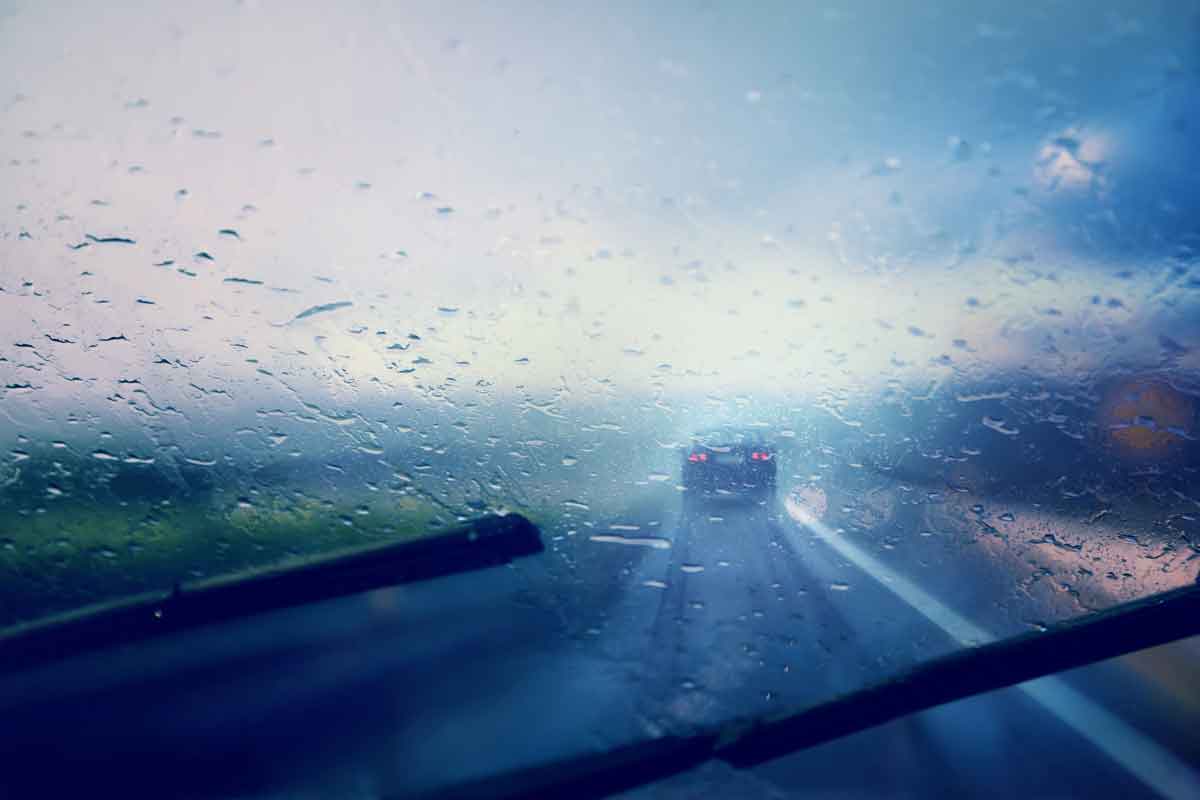Storms in the Rio Grande Valley Require Caution When Driving
by Amber Cortez | May 14th, 2021 | Driving Tips

Severe weather hit the Rio Grande Valley a few hours after midnight on Wednesday, May 12th. Heavy wind, rains, and lightning caused serious damage throughout the region, with the Mid-Valley carrying the brunt of the storm.
While the storm hit at an hour when few drivers were on the road, it could’ve just as easily occurred during rush hour traffic. Heavy rain, low visibility, and slippery roads can easily lead to catastrophic – or even fatal – car accidents.
With summer starting soon and hurricane season just around the corner, drivers in the Rio Grande Valley need to consider the importance of preparing for driving in poor weather conditions. Your Weslaco car accident lawyer at J. Gonzalez Injury Attorneys would like to remind you of the importance of being extra cautious when behind the wheel during heavy rainfall.
How Inclement Weather Can Affect Drivers
Adverse weather conditions, such as heavy rains, can greatly affect driving conditions, including:
-
- Roadway capacity can be affected by heavy rains. Flooding, road closures, access restrictions, debris accumulation, or obstruction of roads can mean danger when traveling.
- Drivers are affected by mobility when driving on slippery roads. Not only must drivers slow down in consideration of the weather, but they may also be required to take evasive actions in order to avoid colliding with another vehicle.
- Inclement weather generally leads to a lowered range of sight, especially in conditions such as heavy thunderstorms. When vision is reduced to a few feet in front of the driver, it can be difficult to stay safe on the road.
Dangerous Weather Equals Dangerous Driving
A study conducted by the National Highway Traffic Safety Administration (NHTSA) found that the most dangerous driving conditions occur when it is raining. Amazingly, rainy weather causes more driving fatalities than driving in the snow. Since rain causes roadways to become wet and slippery, it can be harder for motorists to maintain full control of their vehicle.
Alongside the National Highway Traffic Safety Administration, the Federal Highway Administration highlights some startling statistics regarding weather on driver safety:
-
- An average of 5,000 lives are lost each year in the United States due to inclement weather.
- Over 418,000 are seriously injured in weather-related crashes each year in the U.S.
- 70%of weather-related crashes occur on wet pavement, while 46% occur during rainfall.
Protecting Yourself & Loved Ones When Driving in the Rain
1.Save a life and slow down when driving in the rain.
It’s simple. Wet roads are dangerous and even more so when you’re speeding. During a heavy downpour, you should travel at a lower speed than the limit just to be safe.
If other drivers are zooming by, give them space and allow them to pass. There’s no sense in risking your life because someone else is in a rush.
2.Turn on your headlights in heavy rain.
Texas legally requires you to turn on your headlights if you are unable to see 1,000 feet ahead of you when driving. However, it’s still in your best interest to turn on your vehicle’s headlights even if it’s only slightly raining.
You’ll be able to see better and other drivers will be able to see you more clearly.
3.Avoid suddenly breaking.
Slamming on the breaks in any situation is dangerous and can lead to you losing control of your vehicle in stormy weather.
If you must travel during a thunderstorm, drive slower than usual and take your foot off the accelerator earlier than you normally would before gently pressing your brakes.
4.Handling hydroplaning.
When your tires lose traction with the roadway because of water, your vehicle can become difficult to control, which is essentially hydroplaning.
If you begin to hydroplane (lose control of your vehicle), take your foot off the gas pedal slowly and steer your car straight until you are able to gain control again. If your car is spinning, turn the wheel in the direction the vehicle is spinning to avoid flipping your car.
5.Leave extra space.
This is a very common-sense move that can save you from a serious accident. Simply, keep extra distance between your car and the car in front of you when traveling in heavy rain. This will ensure that you have enough space – and time – to maneuver accordingly.
6.Give it time before you hit the road.
Unless you are already on the road, or an emergency requires you to get behind the wheel, it is in your best interest to wait until the weather clears up to travel.
If you are already on the road and the weather takes a turn for the worse, pull over somewhere safe and allow the storm to pass.
7.Watch out for foggy windows.
Rain will cause humidity levels to increase, which will likely cause your windows to fog up. Most cars have ventilation systems with a function that will help get rid of this type of fog. If your car doesn’t have this feature, pull over until you can see out your windows.
Don’t Risk It: Safety First When Driving in Bad Weather
Unfortunately, there are many negligent drivers who put others at risk with their driving behaviors.
If you or a loved one should be involved in a car accident during bad weather conditions, do not hesitate to contact the Weslaco car accident lawyers of J. Gonzalez Injury Attorneys to fight for your rights and begin putting your life back in order.

